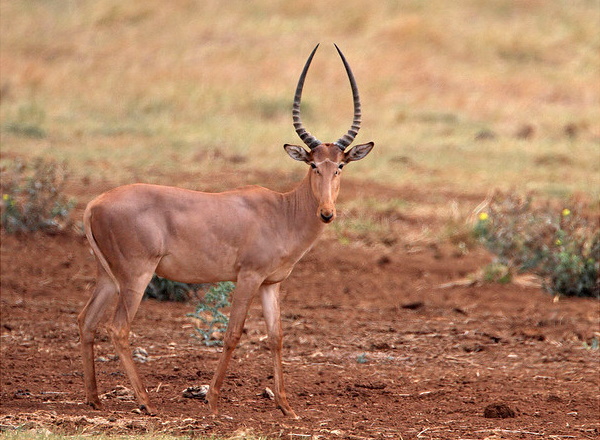Antelopes, if you haven’t yet “herd”, are an incredibly varied group of horned ruminants roaming across an astonishingly wide and diverse range of habitats.
Giant Eland – The Largest Antelope
Let’s start at the top: the Giant Eland (Taurotragus derbianus) is the world’s largest antelope. These majestic creatures inhabit increasingly shrinking home ranges in western and central Africa. Giant Elands can grow up to 11.3 ft (345 cm) long and up to 5.9 ft (180 cm) tall at the shoulder. Adult males weigh approximately 880 to 2,650 lbs (400 to 1,200 kg), while females can weigh up to 1,320 lbs (600 kg). (images above via Jean and at top via cuatrok77)
* Amazing Antelope Fact: While Giant Elands are indeed the largest of all antelopes, the “giant” in their name actually refers to their massive spiraling horns. These horns can grow up to 4.04 ft (123 cm) long on males and up to 2.17 ft (66 cm) long on females.
Royal Antelope – The Smallest Antelope
The truly diminutive Royal Antelope (Neotragus pygmaeus) is the world’s smallest antelope. Royal antelopes are native to lowland forest regions of West Africa, where they are threatened by human encroachment on their habitat. These hare-sized antelopes stand only 10 inches (25 cm) tall at the shoulder and weigh from 5.5 to 6.6 lbs (2.5 to 3 kg). (image via Laura Wolf)
* Amazing Antelope Fact: Adult female Royal Antelopes are typically larger than males but only the males have horns. In keeping with this species’ overall tiny size, however, their smooth and spiky horns only grow up to 1.4 inches (3.5 cm) in length.
Wildebeest – The Unlikeliest Antelope
They may not look the part but Wildebeest or “Gnu” (from their distinctive vocalizations) most definitely and officially ARE antelopes. These iconic African ruminants are renowned for their epic seasonal Great Migration, back and forth across the plains and rivers of East Africa. There are two species of wildebeest in the genus Connochaetes: the Black Wildebeest (C. gnou) and the Blue Wildebeest (C. taurinus) with the latter species being much more common. (cropped image via Thomson Safaris Tanzania Safaris and Kili Treks)
* Amazing Antelope Fact: Dutch settlers in the early 18th century first encountered gnus during their “treks” to the interior of what is now South Africa. Noting their casual resemblance to domestic cattle, they dubbed them “wildebeest” (“wild ox”).
Think having horns is the be-all end-all? Check out World’s Last Northern White Rhino Guarded 24/7!
